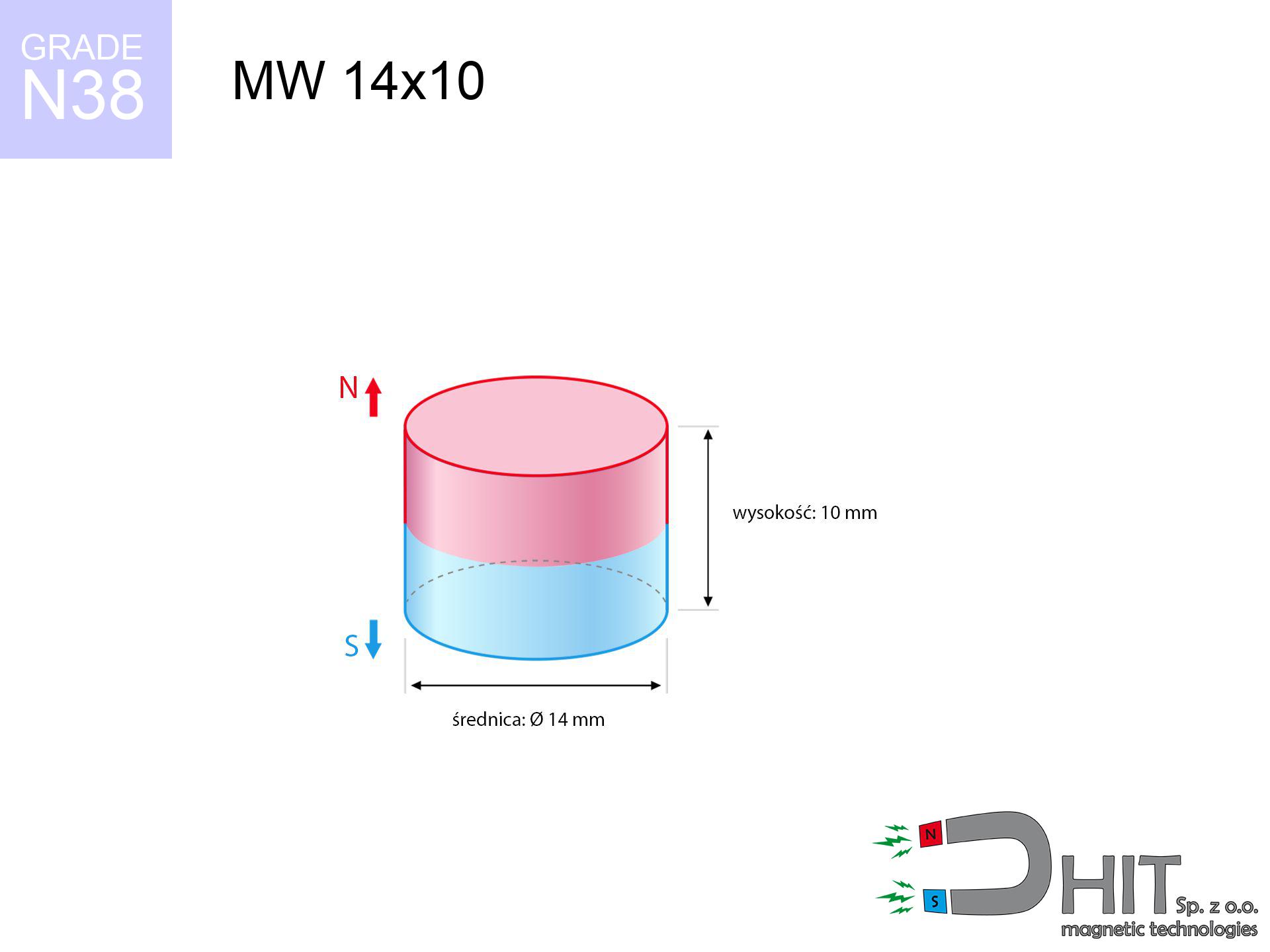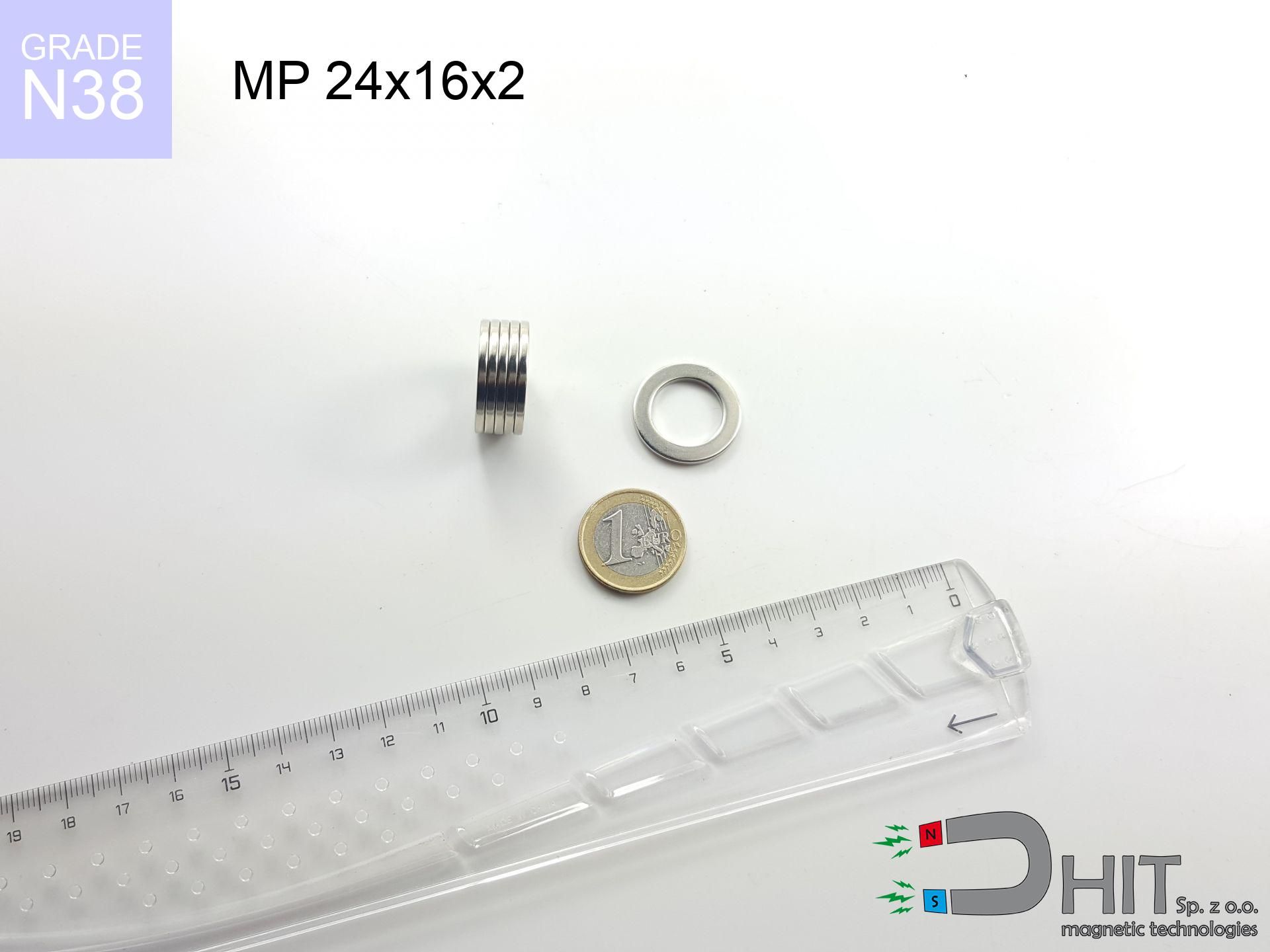HH 20x7.2 [M4] / N38 - through hole magnetic holder
through hole magnetic holder
Catalog no 370481
GTIN/EAN: 5906301814917
Diameter Ø
20 mm [±1 mm]
Height
7.2 mm [±1 mm]
Weight
13.2 g
Magnetization Direction
↑ axial
Load capacity
8.00 kg / 78.45 N
Coating
[NiCuNi] Nickel
6.40 ZŁ with VAT / pcs + price for transport
5.20 ZŁ net + 23% VAT / pcs
bulk discounts:
Need more?
Call us now
+48 22 499 98 98
if you prefer send us a note by means of
request form
the contact page.
Parameters along with structure of magnetic components can be verified with our
magnetic mass calculator.
Orders submitted before 14:00 will be dispatched today!
Physical properties - HH 20x7.2 [M4] / N38 - through hole magnetic holder
Specification / characteristics - HH 20x7.2 [M4] / N38 - through hole magnetic holder
| properties | values |
|---|---|
| Cat. no. | 370481 |
| GTIN/EAN | 5906301814917 |
| Production/Distribution | Dhit sp. z o.o. |
| Country of origin | Poland / China / Germany |
| Customs code | 85059029 |
| Diameter Ø | 20 mm [±1 mm] |
| Height | 7.2 mm [±1 mm] |
| Weight | 13.2 g |
| Magnetization Direction | ↑ axial |
| Load capacity ~ ? | 8.00 kg / 78.45 N |
| Coating | [NiCuNi] Nickel |
| Manufacturing Tolerance | ±1 mm |
Magnetic properties of material N38
| properties | values | units |
|---|---|---|
| remenance Br [min. - max.] ? | 12.2-12.6 | kGs |
| remenance Br [min. - max.] ? | 1220-1260 | mT |
| coercivity bHc ? | 10.8-11.5 | kOe |
| coercivity bHc ? | 860-915 | kA/m |
| actual internal force iHc | ≥ 12 | kOe |
| actual internal force iHc | ≥ 955 | kA/m |
| energy density [min. - max.] ? | 36-38 | BH max MGOe |
| energy density [min. - max.] ? | 287-303 | BH max KJ/m |
| max. temperature ? | ≤ 80 | °C |
Physical properties of sintered neodymium magnets Nd2Fe14B at 20°C
| properties | values | units |
|---|---|---|
| Vickers hardness | ≥550 | Hv |
| Density | ≥7.4 | g/cm3 |
| Curie Temperature TC | 312 - 380 | °C |
| Curie Temperature TF | 593 - 716 | °F |
| Specific resistance | 150 | μΩ⋅cm |
| Bending strength | 250 | MPa |
| Compressive strength | 1000~1100 | MPa |
| Thermal expansion parallel (∥) to orientation (M) | (3-4) x 10-6 | °C-1 |
| Thermal expansion perpendicular (⊥) to orientation (M) | -(1-3) x 10-6 | °C-1 |
| Young's modulus | 1.7 x 104 | kg/mm² |
Material specification
| iron (Fe) | 64% – 68% |
| neodymium (Nd) | 29% – 32% |
| boron (B) | 1.1% – 1.2% |
| dysprosium (Dy) | 0.5% – 2.0% |
| coating (Ni-Cu-Ni) | < 0.05% |
Ecology and recycling (GPSR)
| recyclability (EoL) | 100% |
| recycled raw materials | ~10% (pre-cons) |
| carbon footprint | low / zredukowany |
| waste code (EWC) | 16 02 16 |
View more products
Advantages and disadvantages of neodymium magnets.
Strengths
- They retain attractive force for around ten years – the loss is just ~1% (according to analyses),
- They retain their magnetic properties even under close interference source,
- The use of an refined coating of noble metals (nickel, gold, silver) causes the element to look better,
- They are known for high magnetic induction at the operating surface, which increases their power,
- Due to their durability and thermal resistance, neodymium magnets can operate (depending on the form) even at high temperatures reaching 230°C or more...
- Considering the potential of precise molding and adaptation to specialized needs, neodymium magnets can be manufactured in a wide range of shapes and sizes, which increases their versatility,
- Key role in future technologies – they are used in magnetic memories, electromotive mechanisms, diagnostic systems, and industrial machines.
- Relatively small size with high pulling force – neodymium magnets offer high power in small dimensions, which enables their usage in compact constructions
Cons
- To avoid cracks upon strong impacts, we recommend using special steel housings. Such a solution secures the magnet and simultaneously increases its durability.
- When exposed to high temperature, neodymium magnets experience a drop in power. Often, when the temperature exceeds 80°C, their power decreases (depending on the size, as well as shape of the magnet). For those who need magnets for extreme conditions, we offer [AH] versions withstanding up to 230°C
- When exposed to humidity, magnets start to rust. For applications outside, it is recommended to use protective magnets, such as those in rubber or plastics, which prevent oxidation and corrosion.
- Limited possibility of making threads in the magnet and complicated forms - preferred is casing - mounting mechanism.
- Potential hazard to health – tiny shards of magnets are risky, if swallowed, which is particularly important in the aspect of protecting the youngest. It is also worth noting that small components of these products can complicate diagnosis medical when they are in the body.
- With mass production the cost of neodymium magnets is a challenge,
Holding force characteristics
Highest magnetic holding force – what affects it?
- using a plate made of mild steel, functioning as a ideal flux conductor
- with a thickness minimum 10 mm
- with an ground touching surface
- with zero gap (no coatings)
- during pulling in a direction perpendicular to the mounting surface
- at standard ambient temperature
Determinants of practical lifting force of a magnet
- Space between magnet and steel – even a fraction of a millimeter of separation (caused e.g. by varnish or unevenness) diminishes the magnet efficiency, often by half at just 0.5 mm.
- Angle of force application – maximum parameter is available only during pulling at a 90° angle. The shear force of the magnet along the surface is usually many times lower (approx. 1/5 of the lifting capacity).
- Plate thickness – insufficiently thick sheet does not accept the full field, causing part of the flux to be wasted to the other side.
- Material composition – not every steel attracts identically. Alloy additives worsen the interaction with the magnet.
- Base smoothness – the more even the plate, the better the adhesion and higher the lifting capacity. Unevenness creates an air distance.
- Operating temperature – neodymium magnets have a negative temperature coefficient. At higher temperatures they lose power, and in frost they can be stronger (up to a certain limit).
Holding force was measured on a smooth steel plate of 20 mm thickness, when a perpendicular force was applied, in contrast under shearing force the load capacity is reduced by as much as fivefold. Additionally, even a slight gap between the magnet’s surface and the plate reduces the holding force.
Safe handling of neodymium magnets
Choking Hazard
NdFeB magnets are not suitable for play. Eating a few magnets may result in them pinching intestinal walls, which constitutes a severe health hazard and necessitates urgent medical intervention.
Precision electronics
A strong magnetic field negatively affects the operation of magnetometers in phones and navigation systems. Do not bring magnets close to a device to prevent damaging the sensors.
Thermal limits
Control the heat. Heating the magnet to high heat will destroy its magnetic structure and strength.
Immense force
Handle magnets consciously. Their powerful strength can surprise even professionals. Stay alert and do not underestimate their force.
Pacemakers
Warning for patients: Powerful magnets disrupt medical devices. Keep at least 30 cm distance or request help to handle the magnets.
Magnet fragility
Neodymium magnets are sintered ceramics, which means they are very brittle. Collision of two magnets leads to them shattering into small pieces.
Serious injuries
Big blocks can break fingers in a fraction of a second. Never put your hand betwixt two attracting surfaces.
Skin irritation risks
Allergy Notice: The Ni-Cu-Ni coating contains nickel. If an allergic reaction happens, immediately stop handling magnets and use protective gear.
Flammability
Mechanical processing of NdFeB material poses a fire hazard. Neodymium dust oxidizes rapidly with oxygen and is hard to extinguish.
Magnetic media
Equipment safety: Strong magnets can damage payment cards and delicate electronics (heart implants, medical aids, mechanical watches).

![Magnet with hole HH 20x7.2 [M4] / N38 Magnet with hole HH 20x7.2 [M4] / N38](https://cdn3.dhit.pl/graphics/banners/magnet.webp)
![HH 20x7.2 [M4] / N38 - through hole magnetic holder](https://cdn3.dhit.pl/graphics/products/hh-20x7.2-m4-luc.jpg)



![UI 39x9x7 [BA] - badge holder UI 39x9x7 [BA] - badge holder](https://cdn3.dhit.pl/graphics/products/ui39x9x7-dav.jpg)

